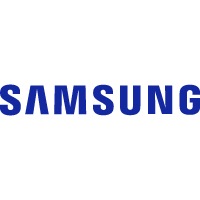Samsung Segmentation, Targeting and Positioning: multi-segment, imitative and anticipatory
 Samsung segmentation, targeting and positioning involves a set of activities performed in a sequence. These activities constitute the essence of Samsung marketing strategy.
Samsung segmentation, targeting and positioning involves a set of activities performed in a sequence. These activities constitute the essence of Samsung marketing strategy.
Segmentation involves dividing population into different groups on the basis of their common characteristics. Targeting is associated with selecting specific group(s) as consumers of products and services. Lastly, positioning refers to the selection of the marketing mix the most suitable for the target customer segment.
Samsung uses the following types of positioning:
Multi-segment positioning. Samsung targets more than one segments at the same time through offering several packages of products and services. For example, there are several variations of Samsung SMART Signage professional displays with different sizes, screen resolutions and functionalities and ultimately with different price tags. Thus, Samsung appeals to the needs and wants of consumers with varying financial capabilities.
Imitative positioning. Samsung is known to imitative its main competitor Apple in product in design, functionalities, as well, as marketing strategy.
Anticipatory positioning. Certain Samsung products such as mobile image sensors currently have low turnover. However, these product have been developed with the anticipation that the turnover will increase in the future.
The following table illustrates Samsung segmentation, targeting and positioning:
| Type of segmentation | Segmen-tation criteria | Samsung target customer segment
|
||
| Samsung IT & Mobile Communications | Samsung Consumer Electronics | Samsung Device Solutions | ||
| Geog-raphic | Region | 80 countries worldwide | 80 countries worldwide | 80 countries worldwide |
| Density | Urban/rural | Urban/rural | Urban/rural | |
|
Demo-graphic |
Age | 18-65 | 25-65 | 25-60 |
| Gender | Males & Females | Males & Females | Males & Females | |
| Life-cycle stage | Bachelor Stage
Newly Married Couples Full Nest I Full Nest II Full Nest III Empty Nest I Empty Nest II Solitary Survivor I Solitary Survivor II |
Bachelor Stage
Newly Married Couples Full Nest I Full Nest II Full Nest III Empty Nest I Empty Nest II
|
Bachelor Stage
Newly Married Couples Full Nest I Full Nest II Full Nest III
|
|
| Occupa-tion | Students, employees, professionals | Employees, professionals | Students, employees, professionals | |
| Beha-vioral | Degree of loyalty | ‘Hard core loyals’
‘Soft core loyals’ ‘Switchers’ |
‘Hard core loyals’
‘Soft core loyals’ ‘Switchers’ |
‘Hard core loyals’
‘Soft core loyals’ ‘Switchers’ |
| Benefits sought | Sense of belonging
Perception of trendiness Advanced functionality User-friendliness & simplicity Overall high quality |
User-friendliness & simplicity
High quality for competitive price |
Advanced functionality
User-friendliness & simplicity Overall high quality |
|
| Persona-lity | Determined
Ambitious Trendy |
Easygoing
Cost-conscious |
Ambitious
Trendy |
|
| User status | non-users, potential users, first-time users, regular users, and ex-users | non-users, potential users, first-time users, regular users, and ex-users | non-users, potential users, first-time users, regular users, and ex-users | |
| Psychographic | Social class | Middle class
Upper class |
Working class
Middle class |
Middle class
Upper class |
| Lifestyle[1] | Mainstreamer
Succeeder Explorer Reformer |
Resigned
Mainstreamer Aspirer Explorer |
Mainstreamer
Aspirer Succeeder Explorer |
|
Samsung segmentation, targeting and positioning
Samsung Group Report contains a full analysis of Samsung segmentation, targeting and positioning and Samsung marketing strategy in general. The report illustrates the application of the major analytical strategic frameworks in business studies such as SWOT, PESTEL, Porter’s Five Forces, Value Chain analysis and McKinsey 7S Model on Samsung. Moreover, the report contains analyses of Samsung leadership, organizational structure and organizational culture. The report also comprises discussions of Samsung business strategy and addresses issues of corporate social responsibility.
[1]According to Cross Cultural Consumer Characterization by Young & Rubican

